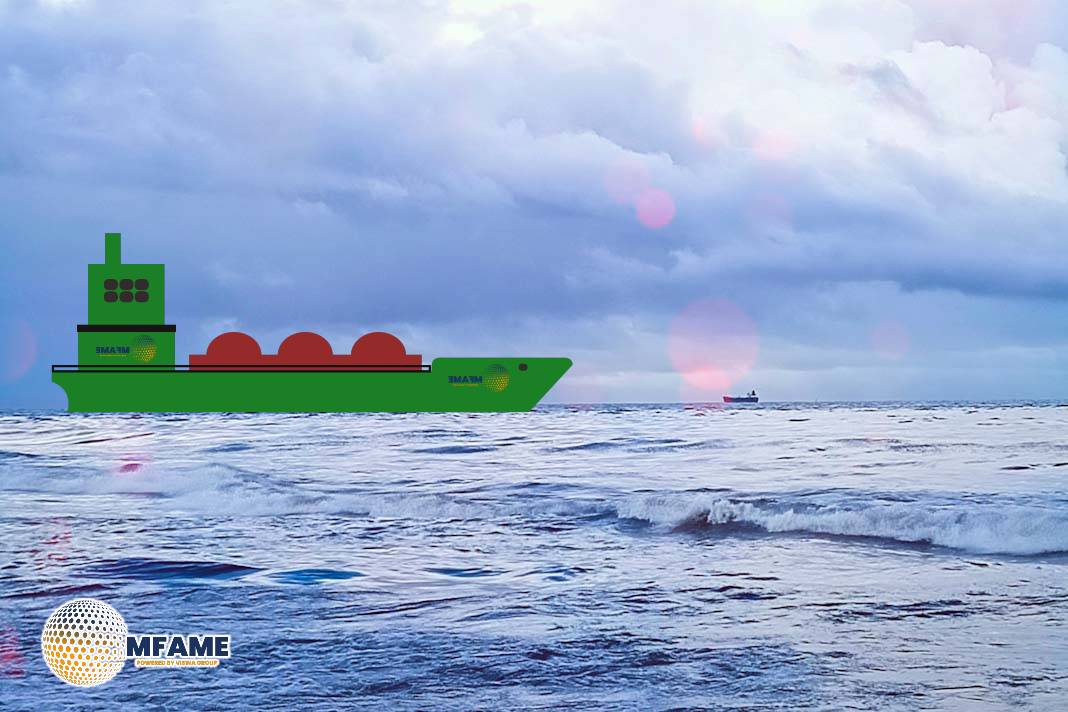- Saldanha Bay Set to Emerge as Green Ammonia Hub.
- Hydrogen Projects to Power South Africa–Europe Trade Route.
- Policy Support Key to Strengthening Green Corridor Business Case.
Ammonia-powered bulk carriers might start their journeys between South Africa and Europe as early as 2029, to achieve full decarbonization by 2035, according to the Global Maritime Forum. A feasibility study conducted by the forum alongside a consortium that includes Anglo American, CMB.TECH, Freeport Saldanha, VUKA Marine, and ENGIE have pinpointed the Saldanha Bay to Rotterdam route as a promising green shipping corridor from the Global South to the North, reports Global Maritime Forum.
Saldanha Bay’s Emerging Green Hub
Saldanha Bay, which serves as South Africa’s primary iron-ore export terminal, is making strides in ammonia production and upgrading its port facilities to facilitate bunkering operations. Initially, ammonia-fueled vessels are expected to refuel in Rotterdam, where a well-established safety and bunkering system is already in place. As time goes on, Saldanha Bay plans to develop its own local bunkering capabilities and position itself as a significant producer of green ammonia.
“This phased approach gives shipowners and fuel producers a clear timeline to work toward, and we now need coordinated action from policymakers and industry to make this a reality by 2029,” said Shanon Neumann, Associate: Investment Facilitation at Freeport Saldanha. “However, to help Saldanha Bay transition quickly, blending public and private funding can unlock investment in infrastructure and reduce the risks of early projects.” The World Bank and World Economic Forum have identified South Africa as a potential key player in decarbonising shipping, with this corridor poised to advance that goal.
Hydrogen Projects and Economic Potential
Upcoming green hydrogen initiatives at Boegoebaai, Saldanha, and Walvis Bay are set to meet the corridor’s ambitious target of 22 bulk carriers annually by 2035. This would encourage investment from hydrogen producers and speed up project development. With the right financial backing, tax incentives, and tariff reductions, South Africa could bolster its status as a global bunkering hub. The hydrogen sector has the potential to contribute as much as 3.6% to the GDP by 2030, with shipping and steel industries being the first to adopt these changes. Additionally, this corridor aligns with South Africa’s Just Energy Transition by fostering local value chains and enhancing skill development.
Policy Alignment Strengthens the Business Case
Anticipated regional and global regulations are likely to improve the project’s viability. Europe’s FuelEU Maritime targets and Emissions Trading System could significantly reduce the cost difference between green ammonia and traditional fuels by more than 60%.
The International Maritime Organisation’s Net-Zero Framework, expected to be revisited in 2026, would further strengthen the outlook through fuel standards and incentives for zero-emission fuels. “With binding global regulations delayed for now, there remains a business case to be made for green ammonia on this corridor,” said Marieke Beckmann, Global Maritime Forum Deputy Director of Decarbonisation. “The role of national and local governments becomes increasingly important in incentivising the adoption of scalable zero-emission fuels. This, combined with EU measures, will help position South Africa as a competitive supplier of clean maritime fuel.”
Roadmap to 2029
The Global Maritime Forum has laid out a roadmap to bring the corridor to life, which includes several key steps:
- Developing fair contracting frameworks that distribute risks and rewards throughout the value chain.
- Collaborating with both government and industry to create supportive policies and generate momentum.
- Securing funding and incentives for port and hydrogen infrastructure.
If successful, the South Africa–Europe Iron Ore Green Corridor could serve as a groundbreaking example of sustainable, commercially viable zero-emission shipping, while also acting as a significant boost for South Africa’s hydrogen economy.
Did you subscribe to our daily Newsletter?
It’s Free Click here to Subscribe!
Source: Global Maritime Forum

















